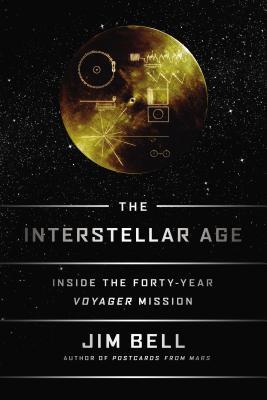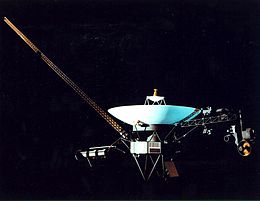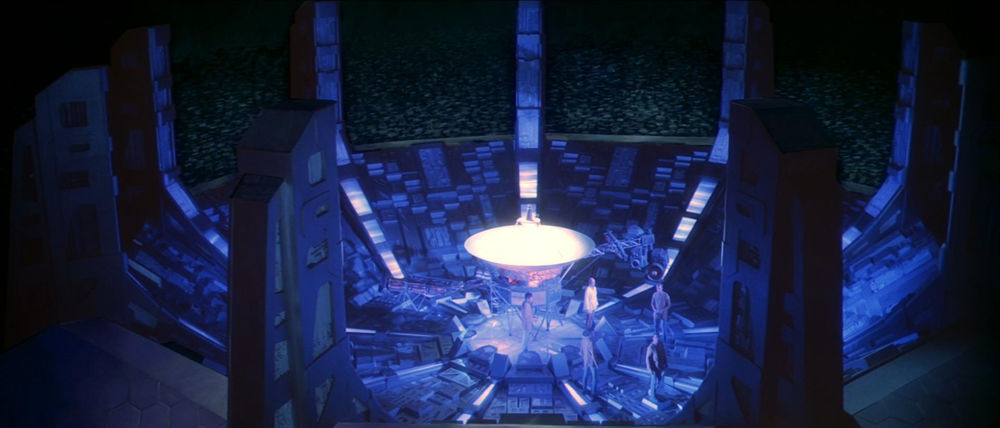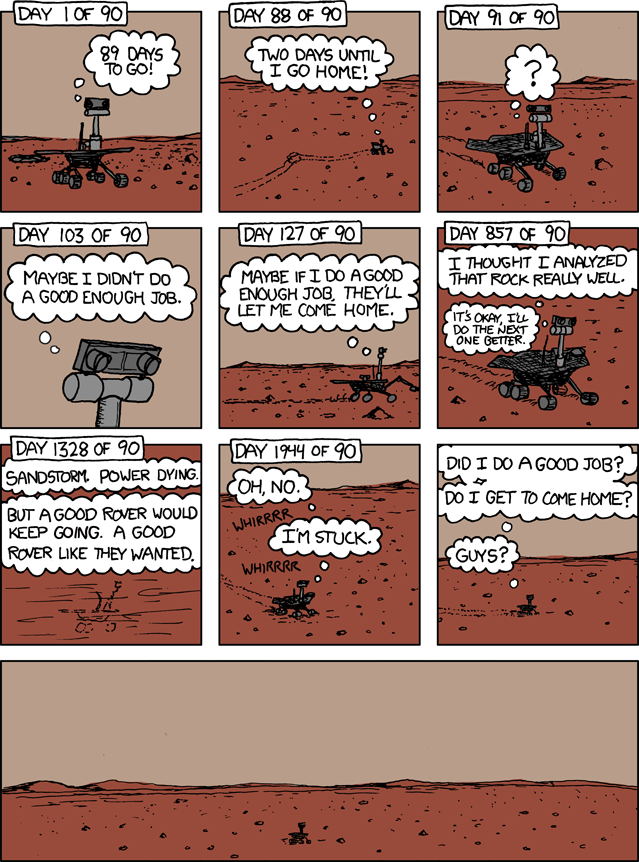 Format read: ebook provided by the publisher via Edelweiss
Format read: ebook provided by the publisher via EdelweissFormats available: hardcover, ebook, audiobook
Genre: science
Length: 336 pages
Publisher: Dutton
Date Released: February 24, 2015
Purchasing Info: Author’s Website, Publisher’s Website, Goodreads, Amazon, Barnes & Noble, Kobo, Book Depository
The story of the men and women who drove the Voyager spacecraft mission— told by a scientist who was there from the beginning.
The Voyager spacecraft are our farthest-flung emissaries—11.3 billion miles away from the crew who built and still operate them, decades since their launch.
Voyager 1 left the solar system in 2012; its sister craft, Voyager 2, will do so in 2015. The fantastic journey began in 1977, before the first episode of Cosmos aired. The mission was planned as a grand tour beyond the moon; beyond Mars, Jupiter, and Saturn; and maybe even into interstellar space. The fact that it actually happened makes this humanity’s greatest space mission.
In The Interstellar Age, award-winning planetary scientist Jim Bell reveals what drove and continues to drive the members of this extraordinary team, including Ed Stone, Voyager’s chief scientist and the one-time head of NASA’s Jet Propulsion Lab; Charley Kohlhase, an orbital dynamics engineer who helped to design many of the critical slingshot maneuvers around planets that enabled the Voyagers to travel so far; and the geologist whose Earth-bound experience would prove of little help in interpreting the strange new landscapes revealed in the Voyagers’ astoundingly clear images of moons and planets.
Speeding through space at a mind-bending eleven miles a second, Voyager 1 is now beyond our solar system’s planets. It carries with it artifacts of human civilization. By the time Voyager passes its first star in about 40,000 years, the gold record on the spacecraft, containing various music and images including Chuck Berry’s “Johnny B. Goode,” will still be playable.
My Review:
I had the same reaction to The Interstellar Age as I did when I went to the Kennedy Space Center a few years ago. I got choked up. Why? Because to this Star Trek fan, space travel is awesome and the future and I’m not going to get to go. Life is too short, and Congress doesn’t give NASA nearly enough funding for space tourism for the middle class to become “real” in my lifetime.
I will tie this back to Star Trek at the end, believe it or not.
But about the book…if you were ever hooked on space travel science fiction, or if you got up in the middle of the night to watch Neil Armstrong land on the moon, or if you’ve ever traveled to see a shuttle launch (or any kind of spacecraft launch) or if you can’t get enough Hubble Telescope pictures, this is a book for you.
While without rockets, it’s just science, this is a science story told through the people who worked on it or were affected by it. While, as one of the researchers says, we shouldn’t try to humanize or personalize the little rovers and probes that form the bulk of our current space program because, and I quote, “they don’t like it”, we can’t help but invest them with personalities and motivations of their own. They represent us. In a slightly robotic way, they are us, or at least the part of us that needs to go out and explore.
Possibly, as this recent strip from xkcd attests, they represent other parts of us as well:
Back to Voyager and The Interstellar Age. I want to invoke Star Trek again. Because these are the voyages of the Interstellar Voyager Project, its ongoing mission: “to explore strange new worlds, to seek out new life and new civilizations, to boldly go where no (Terran) has gone before.”

In the past 40 years, and continuing, the two Voyager space probes, and the probes that followed in their wake, have extended human knowledge of our solar system, and are now either completely outside of our Solar System (Voyager 1) or are getting there fast (Voyager 2). We humans have sent a piece of ourselves into the space between the stars, both in the hopes that we can continue to learn from its explorations, and that someday, perhaps, some other civilization in some other star-system will scoop it up and discover who we were.
The project is huge and was in many ways all encompassing for the people who worked on it. There are folks now part of the project who were not born when it began in the mid-1970s. But the story of their involvement, in this thing that turns out to have been the biggest and the best time of their lives, is very human and awe-inspiring in that humanity. It’s impossible not to wish you were there when those first photos of Jupiter’s moons appeared. Or with any of the other many firsts accomplished by these probes and the team that worked with them.
In relating the effect that his personal involvement with the Voyager mission has had on his life, the author shows us not just why this journey was important for him, but why it is important for us all.
Reality Rating A: I have a difficult time separating my feelings about the space program from my feelings about the book. Why? Because I want to have been there, and that still touches me deeply.
There are probably a generation (or two) of us who watched Star Trek as kids and saw the hope that humanity would reach the stars. I think we all wanted it to be in our lifetimes, but that is unlikely to happen.
This is a book about the joys and wonders of “big science”. It takes hundreds if not thousands of people devoting their lives and their careers to making project like the Interstellar Voyager mission a success. Or even a possibility. The Interstellar Age is the story of not just how it worked, but why.
It’s also a 40th birthday paean to the Voyager Program itself, and to the people who built them and made them fly.
As a reader, I occasionally got sidetracked with the names of all the different component parts, but all things considered, The Interstellar Age is a popular science story at its best.
One last Star Trek reference. The first Star Trek movie, Star Trek: The Motion Picture, was released in 1979, two years after the launches of Voyagers 1 and 2. In ST:TMP, at the heart of the alien vessel they find Voyager 6, returning to Earth in search of its creator, NASA.

Some day, centuries from now, one of the Voyagers, scarred and pitted by the interstellar winds, might come home – in the arms (or tentacles) of explorers from another star system.
We can dream.

